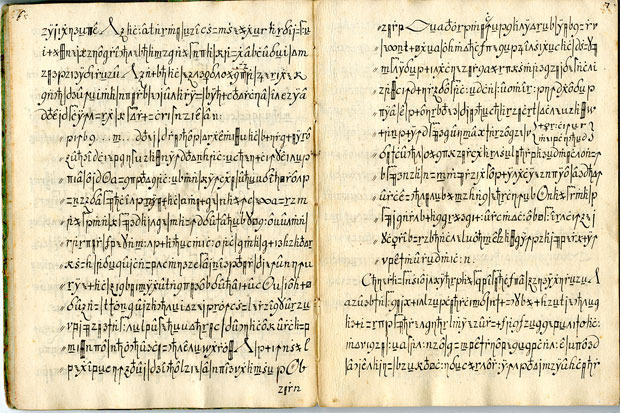 An interesting story making the rounds this week about researchers who have cracked a centuries-old secret message using statistical translation techniques. From Wired UK:
An interesting story making the rounds this week about researchers who have cracked a centuries-old secret message using statistical translation techniques. From Wired UK:
Computer scientists from Sweden and the United States have applied modern-day, statistical translation techniques — the sort that are used in Google Translate — to decode a 250-year old secret message.
The original document, nicknamed the Copiale Cipher, was written in the late 18th century and found in the East Berlin Academy after the Cold War. It’s since been kept in a private collection, and the 105-page, slightly yellowed tome has withheld its secrets ever since.
But this year, University of Southern California Viterbi School of Engineering computer scientist Kevin Knight — an expert in translation, not so much in cryptography — and colleagues Beáta Megyesi and Christiane Schaefer of Uppsala University in Sweden, tracked down the document, transcribed a machine-readable version and set to work cracking the centuries-old code.
The book’s pages — bound in gold and green brocade paper — contained about 75,000 characters in very neat handwriting. Outside of two words — an owner’s mark (“Philipp 1866”) and a note in the end of the last page (“Copiales 3”) — the rest was encoded.
Some of the letters were obviously Roman and others were plainly Greek, while the rest were abstract symbols and doodles.
At first, Knight and his team isolated the Roman and Greek characters, figuring that they might be the real message, and attacked it with a home-made translation project. Eighty different languages and many hours later, and nothing happened. “It took quite a long time and resulted in complete failure,” says Knight.
The team realized that the known characters were just there to mislead. So they booted them out and looked at the symbols. They theorized that abstract symbols with similar shapes might represent the same letter, or groups of letters. They tested this with different languages, and when German was used, some meaningful words emerged — “Ceremonies of Initiation,” followed by “Secret Section.”
A little computation later and a good chunk of the book had been decoded and transcribed. The document revealed the rituals and political leanings of a German secret society, and one that had a strange obsession with eyeballs, plucking eyebrows, eye surgery and ophthalmology. You can read the entire, weird, manifesto in English here.
Buoyant from his success, Knight is now planning on using his techniques and programs to tackle other codes including ones from the Zodiac Killer, a Northern Californian serial murderer from the ’60s; “Kryptos,” an encrypted message carved into a granite sculpture on the grounds of CIA headquarters; and the Voynich Manuscript, a medieval document that has baffled professional cryptographers for decades.
See the entire manuscript describing the work here. And find more coverage here.
(Contributed by Erwin Gianchandani, CCC Director)










Trackbacks /
Pingbacks